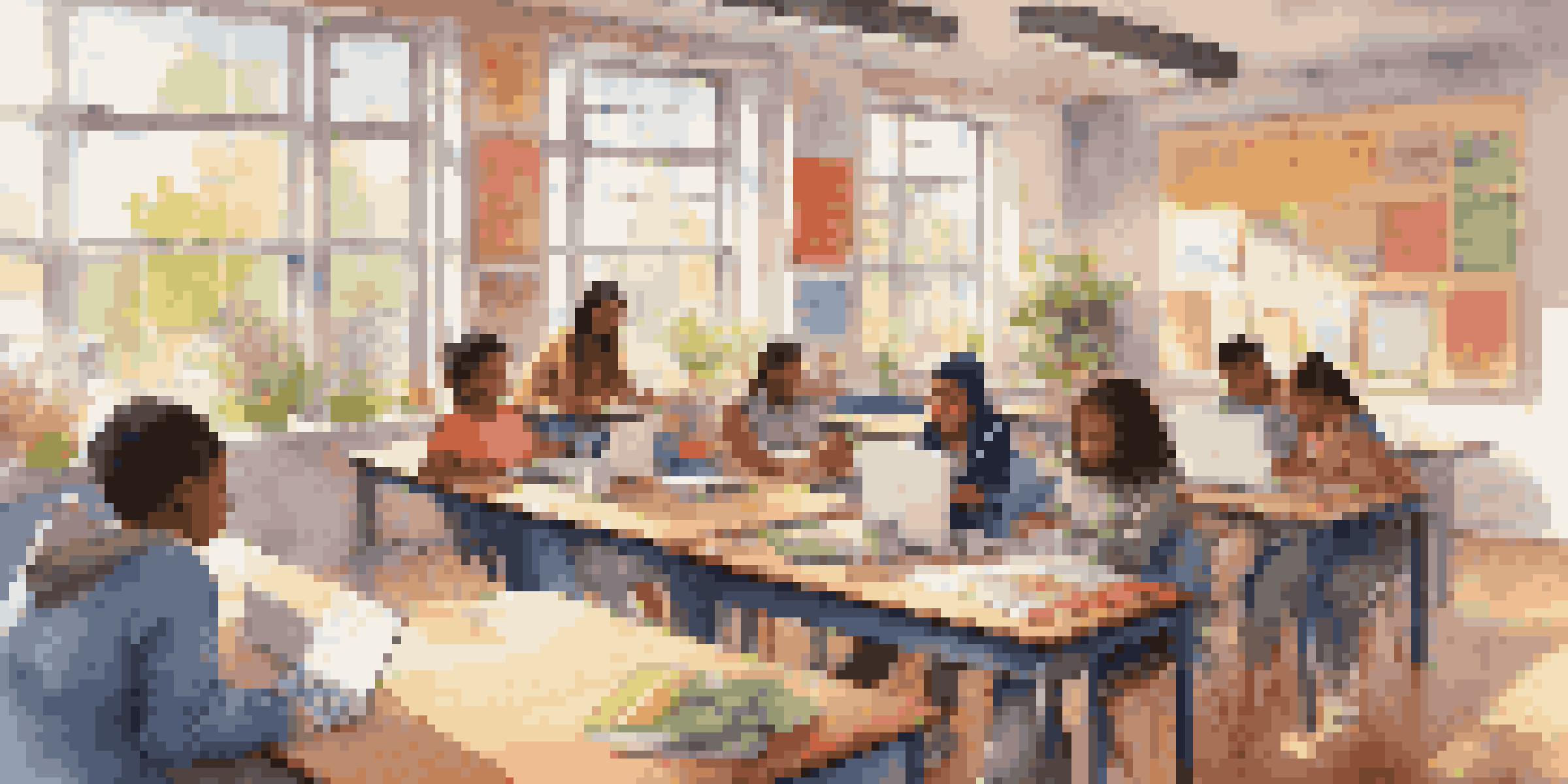Integrating Social Media into Behaviorist Learning Strategies

Understanding Behaviorist Learning Strategies
Behaviorist learning strategies focus on observable behaviors and the effects of external stimuli. This approach emphasizes reinforcement and punishment to shape behavior, making it a powerful tool in educational settings. By understanding how students respond to different stimuli, educators can tailor their methods for maximum effectiveness.
Tell me and I forget. Teach me and I remember. Involve me and I learn.
For instance, using rewards or positive feedback can encourage students to engage more actively in their learning. Think of it as training a pet; when they do something right, a treat reinforces the action. Similarly, in a classroom, praising a student for their participation can lead to increased involvement in future discussions.
In a nutshell, behaviorism is all about fostering an environment where desired behaviors are encouraged and undesirable ones are minimized. This sets the stage for integrating modern tools like social media, which can further enhance these learning strategies.
The Role of Social Media in Education
Social media has transformed how we communicate and interact, making it a valuable educational tool. Platforms like Twitter, Instagram, and Facebook allow educators to connect with students in a space they already frequent. This familiarity can help bridge the gap between learning and engagement, making lessons more relatable and enjoyable.

For example, educators can create dedicated groups on platforms to share resources, discuss topics, or even conduct polls. This interaction not only promotes active participation but also allows students to learn from each other. Picture a classroom where discussions continue outside school walls, creating a community of learners.
Behaviorism Enhances Learning
Behaviorist learning strategies leverage reinforcement and external stimuli to improve student engagement and participation.
Moreover, social media can serve as a platform for instant feedback, enabling students to receive immediate responses to their inquiries. This immediacy aligns well with behaviorist principles, reinforcing positive behaviors and encouraging further engagement.
Combining Behaviorism and Social Media
Integrating social media into behaviorist learning strategies can create a dynamic educational environment. By utilizing principles like reinforcement, educators can encourage students to interact more through online platforms. For instance, awarding points for participation in online discussions can motivate students to contribute more frequently.
The greatest danger in times of turbulence is not the turbulence; it is to act with yesterday's logic.
Additionally, educators can use social media to set up challenges or competitions that promote learning objectives. Imagine a classroom where students earn badges for completing tasks on a platform like Twitter or Instagram. This gamification not only makes learning fun but also helps solidify the behaviorist approach to education.
Ultimately, the combination of behaviorism and social media fosters a more engaging and effective learning experience. By leveraging these tools, educators can create a vibrant community where students feel motivated to participate and learn.
Creating Engaging Content for Social Media Learning
To effectively integrate social media into learning, educators must create engaging content that resonates with students. This means using visuals, videos, and interactive posts to capture attention and stimulate discussion. For instance, sharing a thought-provoking video related to a lesson can spark conversations that reinforce learning objectives.
Moreover, using relatable language and examples helps students connect with the material on a personal level. Think of social media as a storytelling platform; when educators share relatable anecdotes, students are more likely to engage and remember the lessons. The goal is to turn the learning experience into a dialogue rather than a monologue.
Social Media as an Engagement Tool
Social media platforms provide unique opportunities for interaction, collaboration, and instant feedback among students and educators.
By focusing on creating captivating content, educators can maintain students' interest and encourage ongoing participation. This aligns perfectly with behaviorist strategies, as consistent engagement leads to positive reinforcement and deeper learning.
Facilitating Interaction through Social Media
One of the greatest strengths of social media is its ability to foster interaction among students. By creating a space for discussions and collaborative projects, educators can encourage peer-to-peer learning. For instance, students can work together on a group project using a platform like Google Docs, while sharing updates on their progress via Twitter.
This collaborative approach not only enhances learning but also builds critical social skills. Imagine students brainstorming ideas for a project while simultaneously learning to communicate effectively online. Such interactions can reinforce positive behaviors as students see the value of teamwork and respect for diverse perspectives.
Additionally, the immediacy of social media allows for real-time feedback, enabling educators to adjust their strategies promptly. This responsiveness can significantly improve learning outcomes, as students feel supported and engaged throughout their educational journey.
Monitoring and Assessing Student Engagement
To gauge the effectiveness of integrating social media into behaviorist strategies, educators must monitor and assess student engagement regularly. This involves tracking participation levels, analyzing interaction patterns, and collecting feedback from students. By understanding how students are engaging with the content, teachers can adjust their approaches to better meet their needs.
For example, if an educator notices that students are less active in discussions, they can implement new strategies to boost involvement. This might include introducing new topics, adjusting the format of discussions, or even offering incentives for participation. The key is to remain flexible and responsive to student needs.
Challenges in Social Media Use
Educators must navigate challenges such as digital distraction and privacy concerns when integrating social media into learning strategies.
By regularly assessing engagement, educators can ensure that social media remains a valuable tool in their teaching toolkit. This continuous improvement aligns well with behaviorist principles, as it emphasizes the importance of adapting strategies based on observable outcomes.
Challenges and Considerations in Integration
While integrating social media into behaviorist learning strategies offers numerous benefits, it also comes with challenges that educators must navigate. Issues such as digital distraction, privacy concerns, and the need for digital literacy can complicate the process. For instance, students might become sidetracked by unrelated content, detracting from their learning experience.
Additionally, educators must ensure that they are using social media platforms responsibly, prioritizing students' privacy and safety. This might involve setting clear guidelines for online behavior and teaching students about the importance of maintaining a positive digital footprint. By fostering a culture of respect and responsibility, educators can mitigate potential pitfalls.

Ultimately, being aware of these challenges allows educators to proactively address them, ensuring a smoother integration of social media into their teaching strategies. By considering these factors, schools can create a more effective and enjoyable learning environment.